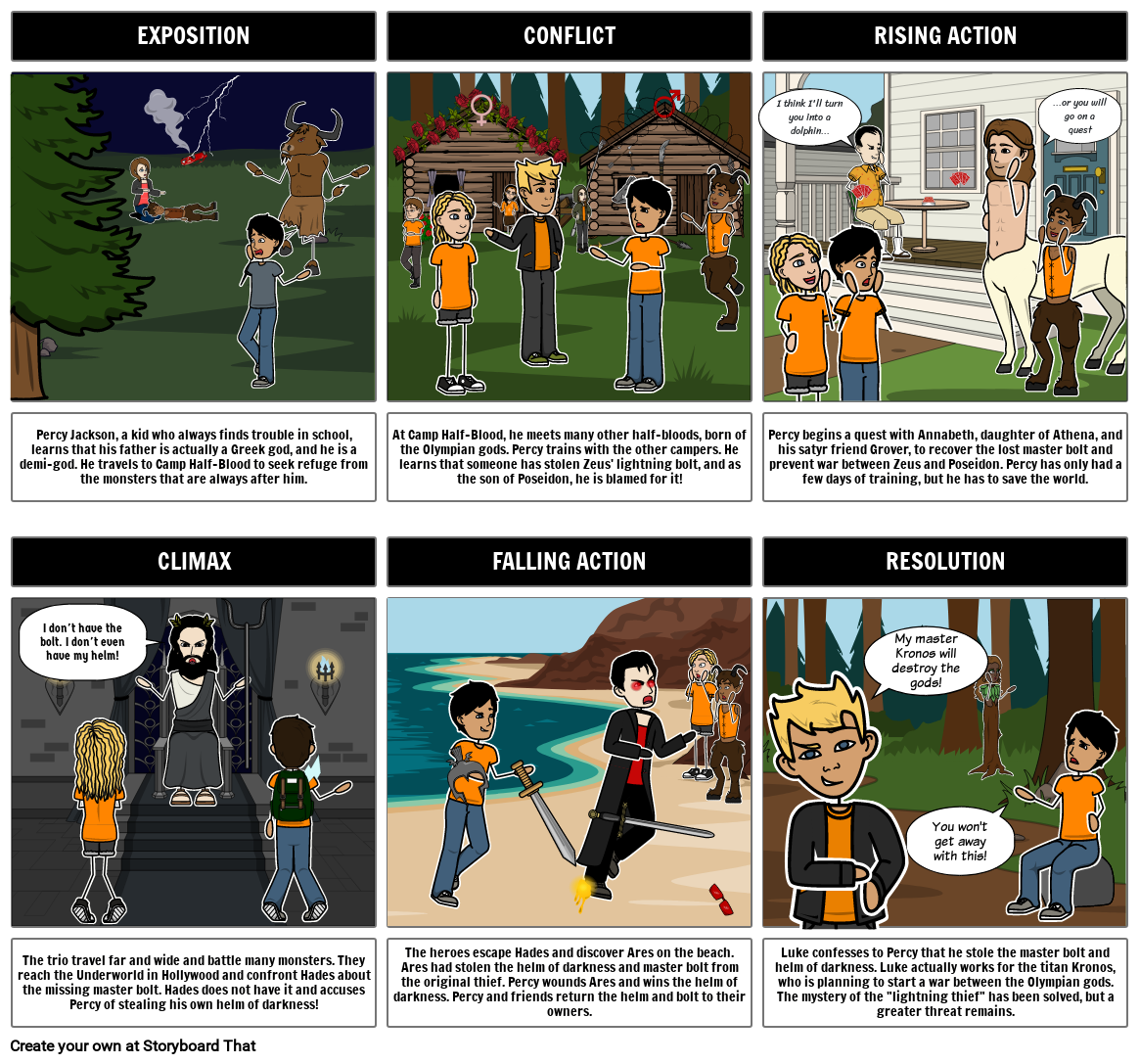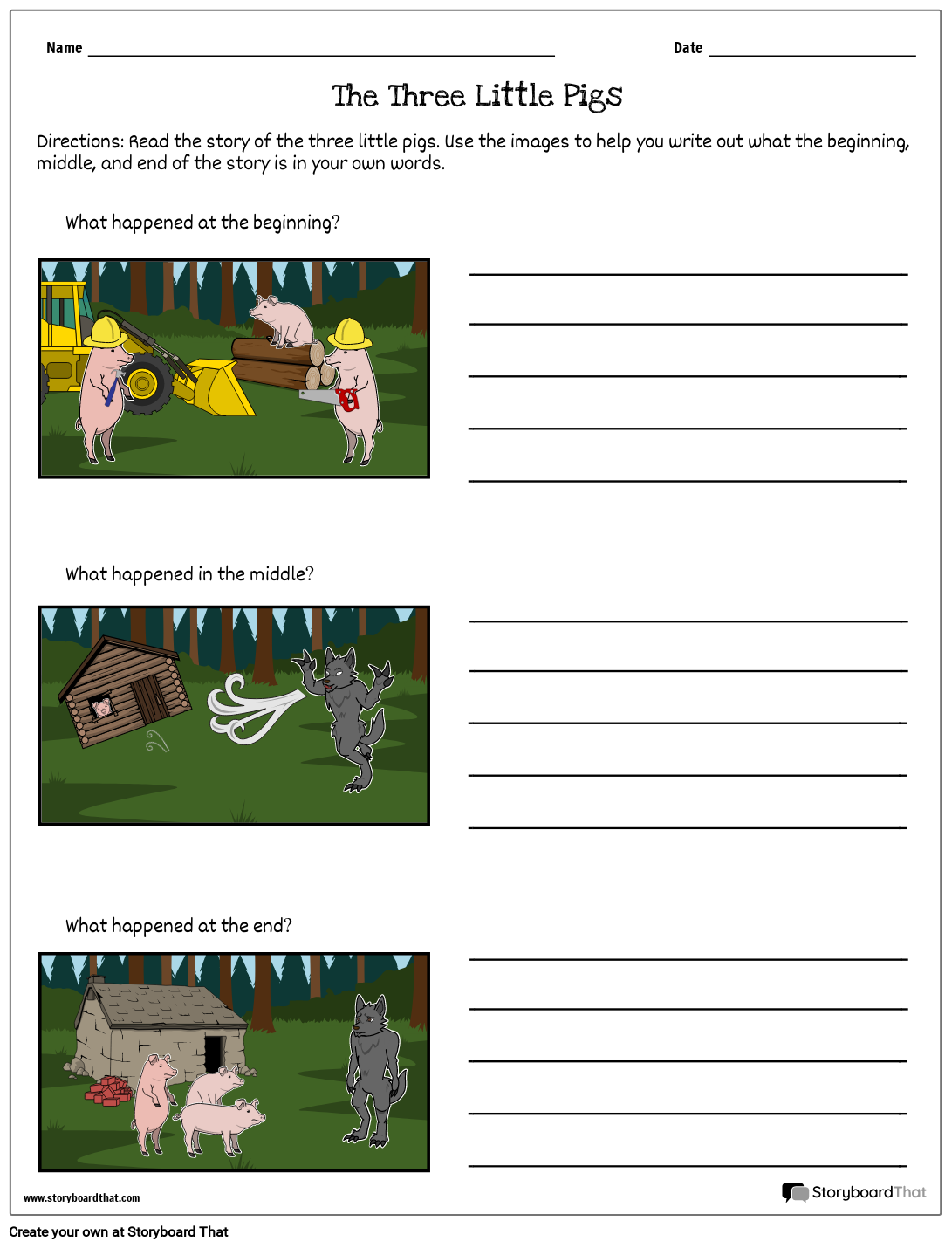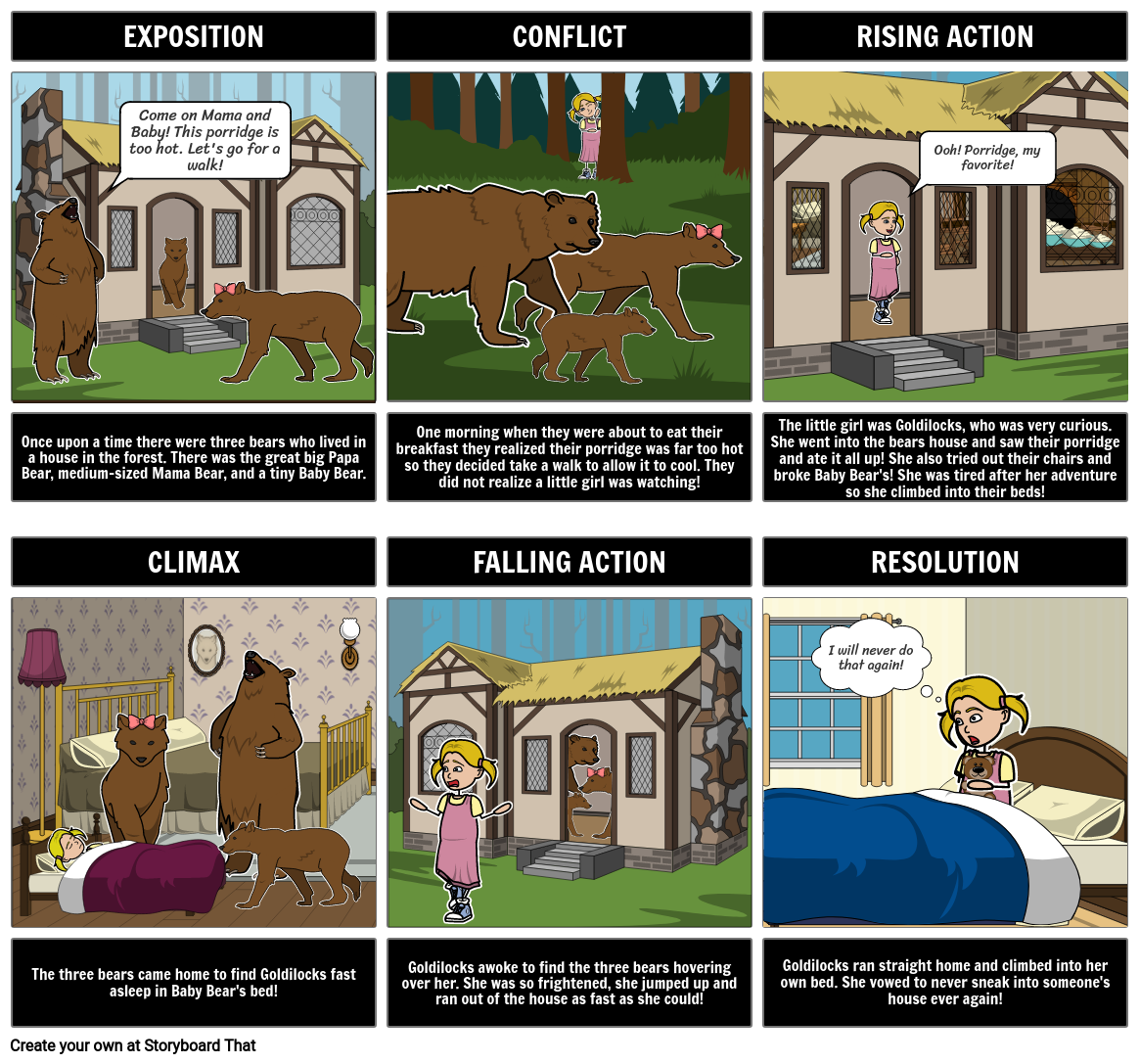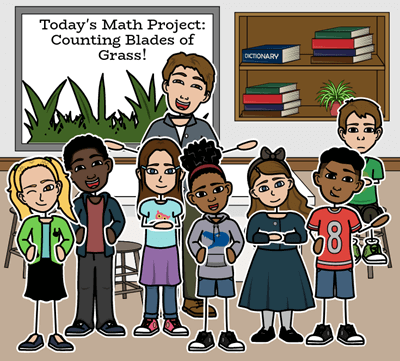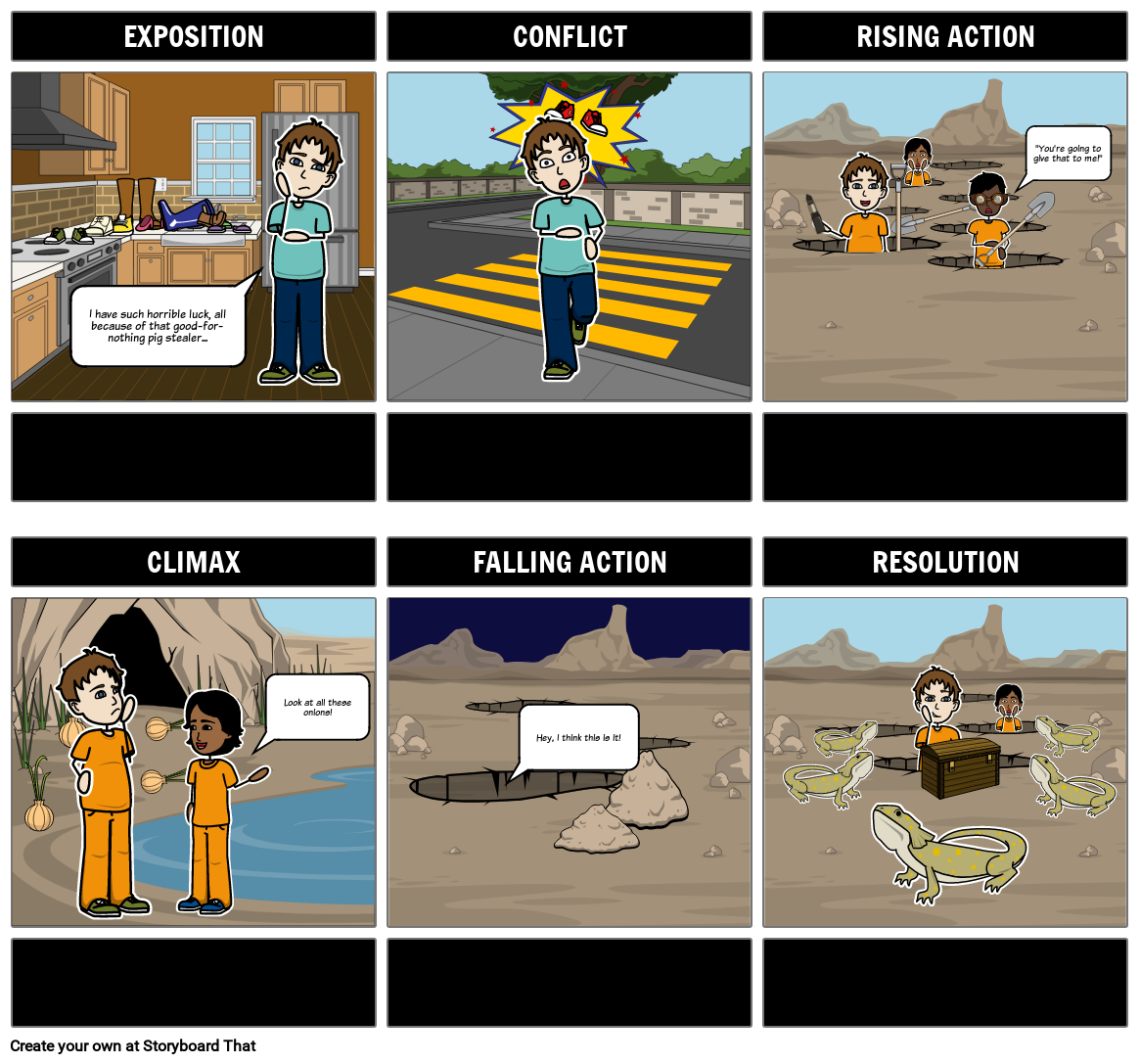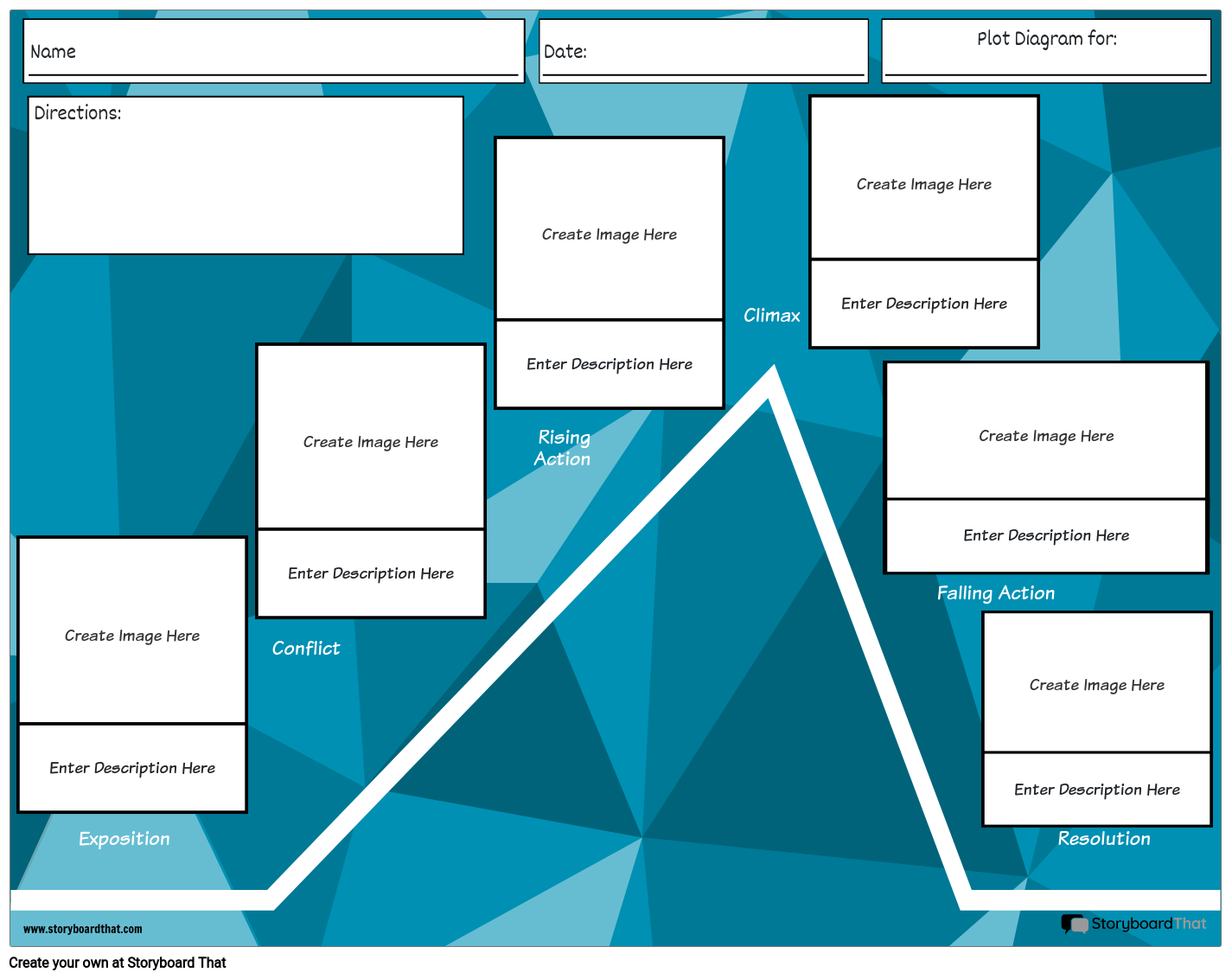What is a Plot Diagram?
A useful plot diagram definition is a concise and visual representation of a story's structure, breaking it down into its essential components, which helps readers and writers analyze and understand narratives more effectively. Simply stated, it is a way of tracking the important events in a story. A plot diagram exposition typically introduces the main characters, establishes the setting, and provides the initial context of the story, laying the foundation for the narrative's development.
Formally, it is a linear graphic representation of the narrative arc of a story that demonstrates the important elements occurring from beginning to end. A detailed plot chart diagram can be a valuable tool for both readers and writers, as it visually maps out the key elements of a narrative, aiding in analysis and storytelling. To put it simply, this visual triangle (as shown in the above image) is an easy way for students to remember the way a story's events unfold. The plot line diagram is broken down into three segments: three segments: beginning, middle, and end that include six main parts or "The Six Parts of a Story": Exposition, Conflict, Rising Action, Climax, Falling Action and Resolution.
Narrative arc diagrams, story arcs, or Plot Diagrams are essential tools for students to improve reading comprehension, build literary connections, and increase their appreciation of literature! Plot line diagrams are called by many names. They may also be referred to as story charts, story arcs, story plot line, plot graphs or charts, story mountains, or plot mountain diagrams. Whatever you call it, it's useful to arrange the plot elements in order because it allows students to pick out major themes in the text, to trace character development with character arcs over the course of the narrative, and for students to hone their analytical skills. They challenge students to create the story arc in order of events, and to pick out and include only the most important key elements to create a concise, organized summary, which is a skill they will use throughout their life!
Lessons emphasizing these skills meet many Common Core Standards for English Language Arts (CCSS.ELA-Literacy) and are referenced in all grade levels. Students are sure to use the skills they learn throughout elementary, middle and high school. However, these concepts can also be used outside of the classroom! They not only give students a fuller understanding of classroom texts, but their favorite books and movies as well.
Plot Structure Example
The plot diagram picture example below is a completed story map from the award-winning novel The Lightning Thief by Rick Riordan. This storyboard exemplifies the plot diagram format, and follows the basic structure of a story arc.
What are the Six Elements of a Plot Diagram?
The 6 elements of a plot diagram or traditional story arc are: exposition, rising action, climax, falling action, and resolution. Creating a story plot map can be an invaluable tool for writers, as it helps them visualize the trajectory of their narrative and ensure a well-structured and engaging story.
| Beginning | Middle | End |
|---|---|---|
|
|
|
Elements of Plot Structure Diagrams Explained:
Exposition
The exposition of the literary plot diagram is the introduction to a story. In many stories, this is where the author exposes the reader to the important elements of the "set up" or background of the story such as the major characters' names, setting, and mood. In a good story, the exposition generally includes introducing the reader to the main and supporting characters as well as where and when the story takes place. The exposition shows how this introduction "sets the stage" and gives the reader the story idea.
Conflict
The plot diagram conflict is the primary problem that drives the story. The conflict may also be called the inciting incident and it is the principal goal for the protagonist or main character to achieve. In a common story structure, the conflict is usually revealed as a problem the main character must solve or an obstacle they need to overcome in order to reach their goal. Both the Exposition and the Conflict are considered part of the Beginning of the story.
Rising Action
The rising action of the story consists of all of the events that lead to the eventual climax of the story. The rising action includes the events in which the character attempts to solve the primary conflict of the story. Most complications unfold during a plot's rising action, adding depth and intrigue to the narrative as the story's central conflict develops. The events broaden the character's development and are notable in the way they create suspense, increased emotion and tension in the story. The rising action is the bulk of the middle of the story.
Climax
The rising action culminates in the climax or turning point in the story. The climax is often the most exciting point of the story or a series of exciting events. The climax in the chart is at the peak of the mountain. This is the moment or moments where there is a marked turning point for the story or the goals of the main character. This may include a major revelation, the overcoming of an obstacle or the character's main problem is resolved. The climax concludes the middle of the story. A climax chart can be used to graphically illustrate the pinnacle of tension and conflict in the story, serving as a visual aid for readers to pinpoint the narrative's most crucial turning point.
Falling Action
The falling action is the beginning of the end. It includes all of the events and everything that happens as a result of the climax, including wrapping-up of main points, questions being answered, and character development. The falling action are all of the events after the turning point that lead the reader to the end or resolution of the story. These events are usually more relaxed and notably decreasing in tension as the story makes its way towards its conclusion.
Resolution
A common resolution to fairytales is "happily ever after," and this classic ending is often depicted on plot diagrams as the point where all conflicts are resolved, and the main characters' lives are filled with joy and contentment. The resolution is not always happy, but it does complete the story. It can leave a reader with questions, answers, frustration, or satisfaction. The resolution or ending of the story may answer important questions and tie up loose ends. However, the resolution can also end in a 'cliff-hanger' wherein some problems remain unsolved perhaps for the reader to ponder or to queue up a sequel.
Why Teach Plot Diagrams?

Teaching students about story structure encourages critical thinking and greater comprehension in reading. Understanding the narrative helps students engage in deep reading and utilize skillful analysis as they read. It encourages students to predict what will happen next and make connections between the story they are reading and other books they have read.
In addition, narrative arcs provide a useful framework for students to apply to their own creative writing. When students engage in creative writing a common challenge is in organizing their ideas and honing in on the important elements that they need to convey.
Making storyboards that illustrate a plot diagram chart can bring students' understanding to life as they identify the key ideas. Storyboarding is an engaging and fun way for students to interact with the texts they read in class. The details featured in a student's storyboard allow their teacher to immediately assess whether the student is comprehending the main events of the story, and the scope of the objectives. "Four Innovative Ways to Teach Parts of a Story" is another helpful article on teaching narrative arcs in elementary school using the popular teaching tools: "Somebody Wanted But So Then" and the "STORY" acronym. By utilizing storyboards, teachers can easily assess students’ understanding of important story components. Combined illustrations and text can enliven difficult concepts like “rising action” and “climax”. These story arc templates help students to flesh out the most important parts of a story in a clear, visually appealing way.
Make a Plot Diagram with Storyboard That!
Students having difficulty making a story arc? Storyboard That Creator to the rescue! Teachers can quickly and easily use the Storyboard Creator in a variety of ways to introduce story plotting to their students.
Students can create short story arc diagram examples using a simple "BME" or "Beginning, Middle End" in a three-cell storyboard. They can also track longer novels or more complicated stories in a "Six Parts of a Story" six-cell storyboard. In addition to traditional storyboards, students can use our worksheet layout to create digital worksheets!
BME: Beginning, Middle and End Summaries
Students can use our classic comic strip layout to retell the elements of plot using a three-cell storyboard. This is best for younger grades, short stories, or for those looking for a quicker assessment. Check out the example stories below! These illustrate how a Beginning, Middle, End, sometimes known as a three act structure, is included in the novel studies for the popular books Sadako and the Thousand Paper Cranes, Pattan's Pumpkin and Charlotte's Web. Note that for Charlotte's Web students can create a BME summary in a chart layout that has two cells for each part giving them more choice in what scenes and important events to include.
Below is a blank BME template and a completed example of a BME summary for the exciting tale Tristan Strong Punches a Hole in the Sky by Kwame Mbalia.
Teachers can also take Storyboard That offline with these pre-made Beginning, Middle, End worksheets. Like all of our pre-designed worksheet templates, these can be easily customized by the teacher or the student to include images and ample space for writing.
"Six Parts of a Story" Plot Diagrams
For longer books and more complicated plots, a six-cell storyboard is necessary for the story diagram. The storyboard template can include titles above each cell for: exposition, conflict, rising action, climax, falling action and resolution. Below is an example from the classic high school novel, To Kill a Mockingbird by Harper Lee. As you can see, there is ample room for descriptions as well as compelling images that illustrate these primary story elements.
Plot Diagrams for any Book
How to get started? Copy the storyboard below to easily give students a blank template to map the narrative arc of a story for any book!
Blank Template
Or, copy our pre-made lesson plan in our General Novel Study Guide and adapt it to meet the needs of your students! The finished example using the tale Goldilocks is below. Since most students know the story of Goldilocks (or can easily re-read it), it is an effective plot chart example to use for many students!
More Examples of Related Activities
A plot diagram in literature can be completed with any novel and across grade levels from elementary through high school. Below are some of our most loved pre-made activities that you can quickly and easily copy into your teacher account: Because of Mr. Terupt by Rob Buyea, The Stars Beneath our Feet by David Barclay Moore, and The Book Thief by Markus Zusak. For more inspiration, see all of our novel studies in our vast Literature Library!
Working on plays with your students? We also have lots of information about Five Act Structure and three act structure to help you and your students understand more about the plot format of the dramatic arc!
How to Differentiate Lessons with Modified Templates
Within all classrooms there are varying degrees of abilities, challenges and needs. Some students may be able to complete a narrative arc template with little assistance while others need a more personalized approach. Students who struggle with reading comprehension may have difficulty picking out the different parts of a story. In our Storyboard That assignments, teachers have the ability to add as many templates as they wish!
Teachers can add templates that include leading information such as prompts, sentence starters and even finished cells to help students that need more scaffolding with the assignment. The best part about providing templates is that teachers can control just what information is provided and decide how much to guide students.
Providing visuals prior to asking the students to complete the assignment gives them “clues” to what they are looking for when completing the diagram. The visuals act as context clues for students to focus their energy on the appropriate information, as seen in the Holes examples below.
In the first template on the left, the teacher used our finished example but removed the text in the description boxes. In this way, the student may use the illustrations as a guide but the challenge is to complete the writing in the descriptions for each plot element.
In the second story template on the right, the teacher included the text in the description boxes but left the cells blank for the student to create the illustrations.
In the third example on the left, the teacher included one finished cell to help get students started. They can see what an illustration and description can look like and apply that knowledge to completing the rest of the diagram.
Finally in the last example, both text and images are included for those students that need maximum support. Teachers can have students use this as a starting point and add speech bubbles, quotes or other text evidence to enhance each plot element.
Digital or Printable Worksheets
Teachers and students can use our worksheet layout along with the pre-made graphic organizer found in the worksheets category in the Creator to create a template from scratch. Even better, teachers may choose from our pre-made narrative arc worksheets! These worksheets can be customized and printed out for students to fill out by hand, or they can be completed in the Storyboard Creator like a digital worksheet. You can even create multiple versions for those students who might need a little extra help with their plot map, and keep them in your teacher dashboard for future use!
Check out our Digital Worksheet Plot Diagram Assignment for the popular book Wonder by R.J. Palacio, or our book creator where students can make their own books. A GIF of the finished example is below! Do your students love Wonder? Check out our more in-depth lessons on this modern classic. These lessons are all standards-aligned and ready to assign to students in just a few clicks!

Relating to the Common Core
Analyzing a literary work with a plot structure diagram fulfills Common Core ELA standards for many age groups. Below are only two examples of ELA standards for different levels. Please see your Common Core State Standards for grade-appropriate strands.
- ELA-Literacy.RL.9-10.2: Determine a theme or central idea of a text and analyze in detail its development over the course of the text, including how it emerges and is shaped and refined by specific details; provide an objective summary of the text
- ELA-Literacy.RL.6.3: Describe how a particular story’s or drama’s plot unfolds in a series of episodes as well as how the characters respond or change as the plot moves toward a resolution
Example Rubrics for Story Diagram Lesson Plans
Rubrics are an essential tool to use with assessments for both teachers and students. For students, rubrics help outline what is expected in a positive, clear and concise way. Students do not have to guess how to meet the expectations of an assignment because it is clearly iterated and can be referenced as they work. For teachers, rubrics allow them to point to specific criteria when grading and providing feedback.
The challenge for most teachers is that rubrics are extremely time consuming to make. Fear not! The educators at Storyboard That have created them for you! Below are some example rubrics that you can use with any plot point lesson plan in elementary, middle and high school. They are all created with Rubric, our easy online rubric maker! These rubrics can be attached to any assignment by simply copying the url! You can also customize and edit these rubrics to meet your specific needs by going to Quick Rubric.
| Proficient 33 Points | Emerging 25 Points | Beginning 17 Points | |
|---|---|---|---|
| Design | Each cell includes a creative heading. Cells include images that help to tell the story and do not hinder understanding. | A cell is missing a heading, or headings are completely unrelated to the diagrammed work. | Cells have no headings. |
| Plot | There are three cells. Each one represents a different part of the story. The cells are in order from beginning to end. | Cells are out of order. | One or more of the cells is missing |
| Spelling and Grammar | Spelling and grammar is mostly accurate. Mistakes do not hinder understanding. | Spelling is very inaccurate and hinders full understanding. | Cells cannot be understood. |
| Proficient 33 Points | Emerging 25 Points | Beginning 17 Points | |
|---|---|---|---|
| Design and Creative Elements | Creativity and imagery are used effectively (helps to tell the story). At least three Textables are included in plot diagram. | Creative elements (clipart) are somewhat distracting. At least two Textables throughout their plot diagram. | Creativity is minimally apparent, and the overall design shows a lack of effort. Clipart may be confusing and distract from the story. Student used one or fewer Textables. |
| Spelling and Grammar | Spelling within the Textables is mostly correct (fewer than eight errors). Grammar does not hinder understanding. | Spelling within textables is somewhat correct (fewer than 10 errors). Grammar may hinder some understanding or make reading difficult. | Spelling is mostly incorrect (10 or more errors). Grammar severely hinders understanding. |
| Plot Elements | There are three complete slides: one for beginning, one for the middle, and one for the end. Slides explain the work of prose and are easy to follow. | There are three cells, but one or two do not depict the correct element within the work of prose (e.g. the beginning is misplaced). Story is somewhat difficult to follow. | One or more cells is missing. Only one part of the plot is represented (e.g. only the beginning). Story is hard to follow. |
| Proficient 25 Points | Emerging 21 Points | Beginning 17 Points | Try Again 13 Points | |
|---|---|---|---|---|
| Descriptive and Visual Elements | Cells have many descriptive elements, and provide the reader with a vivid representation. | Cells have many descriptive elements, but flow of cells may have been hard to understand. | Cells have few descriptive elements, or have visuals that make the work confusing. | Cells have few or no descriptive elements. |
| Grammar/Spelling | Textables have three or fewer spelling/grammar errors. | Textables have four or fewer spelling/grammar errors. | Textables have five or fewer spelling/grammar errors. | Textables have six or more spelling/grammar errors. |
| Evidence of Effort | Work is well written and carefully thought out. Student has done both peer and teacher editing. | Work is well written and carefully thought out. Student has either teacher or peer editing, but not both. | Student has done neither peer, nor teacher editing. | Work shows no evidence of any effort. |
| Plot | All parts of the plot are included in the diagram. | All parts of the plot are included in the diagram, but one or more is confusing. | Parts of the plot are missing from the diagram, and/or some aspects of the diagram make the plot difficult to follow. | Almost all of the parts of the plot are missing from the diagram, and/or some aspects of the diagram make the plot very difficult to follow. |
How to Teach Plot Diagrams in the Elementary Classroom
Define the Parts of a Plot Diagram
Begin by introducing the five key components of a plot diagram: exposition, rising action, climax, falling action, and resolution. Provide examples of each of these parts to help students understand their meanings.
Use Graphic Organizers
Use graphic organizers such as a story map or plot diagram to visually represent the different parts of a story. These organizers can help students see how the different parts of the story fit together.
Read Stories with Clear Plot Structures
Choose books or stories that have clear plot structures. This will help students see how the different parts of the plot diagram work together to create a cohesive story.
Provide Opportunities for Practice
Provide students with opportunities to practice creating their own plot diagrams. This could be done through independent work, small group work, or whole-class activities.
Connect to Real-Life Experiences
Help students see how the plot diagram can be applied to their own lives. For example, they could create a plot diagram for a personal experience or a current event.
Frequently Asked Questions about Plot Diagrams
What are the six parts of a plot diagram?
The plot, or narrative arc of a story, is composed of 6 main parts that make up the beginning, middle and end of the story. The six parts are: exposition, conflict, rising action, climax, falling action, and resolution. These can be mapped out in a storyboard or shown as a plot triangle or story mountain.
Why is it helpful to make plot diagrams?
Plot diagrams can increase students' reading comprehension as well as aid students in their creative writing. They help students learn to identify the most important parts in the plot as well as delve into higher level literary thinking about themes and devices that authors use to tell a story.
How can I make a plot diagram?
Storyboard That makes it so easy to create your own plot diagram! Students can use a storyboard template that has titles and descriptions for each of the 6 parts of the story. We also have many plot diagram worksheet templates to choose from that can be used online as a digital worksheet or printed out and used offline as well!
What is the narrative arc of a story?
The narrative arc of a story includes key stages: exposition (introduction), inciting incident (triggering event), rising action (developing conflict), climax (peak conflict), falling action (unraveling), and resolution (conclusion). These stages structure the story's progression, engage the audience, and provide a satisfying narrative experience.
What is a good narrative arc?
A good narrative arc is a storytelling structure that engages the audience and delivers a satisfying story. It typically consists of key elements: exposition (introduction), inciting incident (triggering event), rising action (developing conflict), climax (peak conflict), falling action (unraveling), and resolution (conclusion). It should engage the audience, develop characters, introduce conflict, explore meaningful themes, and ultimately provide a satisfying and meaningful conclusion, tying up loose ends and answering key questions. The quality of a narrative arc can vary depending on the genre, style, and intended audience, but these elements and qualities are often essential for a compelling narrative.
© 2024 - Clever Prototypes, LLC - All rights reserved.
StoryboardThat is a trademark of Clever Prototypes, LLC, and Registered in U.S. Patent and Trademark Office


